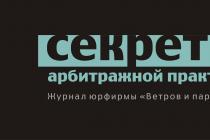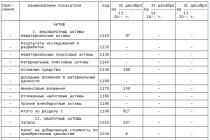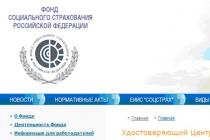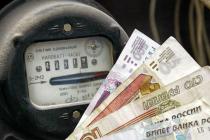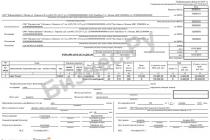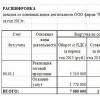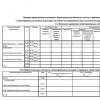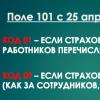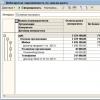I hate being treated in public clinics.
It’s easier for me to pay than to stand in lines to a tired doctor grandmother. Therefore, for any disease, I go to a paid clinic.
In 2015, I spent 18,800 R on diagnostics, consultations and procedures. In 2016, I filed a tax deduction for treatment and returned 2,500 R. I'll tell you how to do the same.
Ekaterina Kondratieva
received a tax deduction for medical treatment
What is a tax deduction for medical treatment
A tax deduction is money that the state returns to you from the personal income tax you paid if you do something useful for the state. There are tax deductions for the purchase of an apartment and education. Today we will talk about the deduction for paid medical services.

Under medical services, the Tax Code includes a doctor's appointment, diagnostics, medical examination, testing, hospitalization, day hospital treatment, dentistry, and prosthetics. The list includes everything that a sick person usually encounters.
Operations, including plastic, IVF, treatment of serious diseases are classified as expensive treatment. They get a different deduction for them, but more on that next time.
You can also get a deduction for voluntary health insurance if you paid for the policy yourself. If it was paid by the employer, then the deduction will not be made.
The amount of the deduction depends on the cost of treatment: the more you spent, the more you will be refunded. But the maximum cost of treatment, which is taken into account when calculating the deduction for treatment, is 120,000 R. This is a general limit for almost all social deductions, in particular, for the costs of treatment and education (see paragraph 2 of article 219 of the Tax Code of the Russian Federation). Even if you paid a million at the hospital, you will receive a deduction as if you paid 120 thousand.
Who can get a deduction
If you receive a salary or have income on which you pay personal income tax, you can receive a deduction. Non-working pensioners, students and women on maternity leave do not have such income, they do not pay personal income tax and therefore do not specifically claim this deduction.

You will also receive a refund if you paid for the treatment of your parents, spouse, children under 18 years of age. To do this, you need a document confirming kinship: a marriage certificate or a birth certificate. You will not be given a deduction for paying for the treatment of your mother-in-law or father-in-law.
For whom the contract for treatment is drawn up - it does not matter. But the payment document must be issued to the one who will receive the deduction.
For example, an elderly father is admitted to the hospital, and the daughter wants to make a deduction for his treatment. The contract can be drawn up either for the father or for the daughter, but payment documents - only for the daughter. If payment documents are issued to the father, the clinic will not give the daughter a tax certificate. It is best if both the contract and the payment papers contain the data of the person who will draw up the deduction. In our example, daughters.
How much money will be returned
The amount of the deduction depends on your salary and the cost of treatment. In any case, the tax authorities will not return more money than the personal income tax paid for the year. Let's look at an example:
Vasily works as a manager and receives 40,000 R per month. For the year he earned 480,000 R.
In 2015, he spent 80,000 R for treatment. Vasily collected the documents and applied for a tax deduction.
After submitting the application, the tax authority will deduct the amount of treatment from Vasily's income for the year and recalculate his personal income tax: (480,000 - 80,000) × 0.13 = 52,000 R.
It turns out that Vasily had to pay 52,000 R, but in fact he paid 62,400 R. The tax office will return the overpayment to him: 62,400 − 52,000 = 10,400 R.
The deduction can be issued within three years from the date of treatment. In 2017, you can receive a deduction for treatment in 2016, 2015 and 2014. The day and month don't matter.
How it works
To receive money, you first need to collect evidence that you were treated and paid: contracts, checks and certificates from the clinic. Then fill out the 3-NDFL declaration on the tax website and send it along with the scanned documents for verification.
After the declaration is approved, it is necessary to write an application for a refund. According to the law, one month after filing the application, the tax must transfer money to your account.
You can do everything gradually. I was in no hurry and prepared the documents for about three months.
Collect checks and contracts for treatment
At the cash desk or reception of the clinic, you will be given an agreement and a receipt. Save these documents: only they confirm the fact of payment for the treatment. Attach the check to the contract with a paper clip or stapler. Then you are tormented to look for which contract which check.

Get help from the clinic
Go to the registry or accounting department and ask for a tax certificate. Present your passport, TIN, agreement with the clinic, all receipts.

Some clinics do not require receipts. They take information about the services provided from their database. But not everyone does this. I lost several checks, and the girl at the reception did not include them in the amount of the certificate.
If you are making a deduction for the treatment of relatives, bring a marriage certificate or birth certificate along with the documents and ask for a certificate to be issued in your name.
In the clinic that I visited, a certificate is made in a maximum of 5-7 days. I came at a deserted time, so I got a certificate in half an hour.

If you doubt that the certificate is issued correctly, check whether it complies with the instructions of the Ministry of Health. Usually this problem does not occur. If the clinic has a license, it is obliged to issue a correctly executed certificate.
Together with the certificate, you will be given a copy of the license to carry out medical activities. If the clinic does not have a license or its validity period has expired, the tax office will not return anything to you. A copy of the license remains with you, it does not need to be sent to the tax office.

Prepare documents for declaration
Scan a certificate from the clinic and an agreement to send them to the tax office remotely. If you receive a deduction for the treatment of parents, spouse, children under 18, then make a scan of your marriage certificate or birth certificate.
The tax website accepts .txt, .doc, .docx, .pdf, .gif, .bmp, .jpg, .jpeg, .png, .tif, .tiff, .zip, .7z, .rar, .arj files ,.xls, .xlsx
Get a 2-NDFL certificate from the accounting department at work. The data from this certificate will be needed to fill out the declaration. It doesn't need to be scanned.
Submit documents to the tax office
Documents can be submitted in three ways:
- In person at the nearest tax office.
- By registered mail.
- On the site nalog.ru.
The first two methods did not suit me: I did not want to stand in lines. I spent the evening and filed documents on the site.
How to apply for a deduction on the tax website
Submitting documents to the tax office is easy. The general logic is as follows: fill in personal data, indicate income and upload proof of treatment costs. So that you do not get confused, we have prepared a six-step instruction.
1. We go to the personal account of the taxpayer and select the section "Tax on personal income tax" → personal income tax.
2. Fill in the passport data. If you indicated the TIN, then the date, place of birth, passport details and citizenship can be omitted.

3. We indicate the employer and income. Here you will need a 2-NDFL certificate. The first paragraph of the certificate contains information about the employer (TIN, KPP and OKTMO).

4. Choose the deduction that we want to receive. The deduction for treatment is in the group "Social tax deductions". Enter the amount you have spent in the "Treatment Expenses" window.
Please note that the cost of treatment and the cost of expensive treatment are two different things. We are only talking about the deduction for treatment.

5. Check the numbers and press the red button "Generate a file to send."

6. Add scanned certificates and contracts. We sign with an electronic signature and click "Sign and send." If you do not have an electronic signature, issue it in your personal account in the section "Profile" → "Obtaining a certificate of the electronic signature verification key".

That's it, you sent the declaration to the tax office. The inspector is obliged to check it within three months. There are no notifications about the verification of the declaration, so I checked my personal account once a month.

A month and a half later, my declaration was approved.
Apply for a refund
Even if your declaration is approved, the money will not be returned without an application. Again we go to the website of the Federal Tax Service:

In the application, full name, passport data will be loaded automatically. You need to enter the details of the account where you want to receive money.
See details in your personal account on the bank's website. In Tinkoff Bank, go to your personal account on the "About account" tab:

After you send the application, the money will be credited to your account within a month. You will receive a message from the bank about this.

Remember
- The tax deduction will be returned if you paid for your own treatment or the treatment of your parents, spouse, child under 18 years old.
- You can apply for a deduction within three years from the date of payment for treatment.
- Keep your receipts and contracts to receive the deduction. Ask the clinic for a tax certificate, and at work - a 2-personal income tax certificate.
- Scan the documents and submit an application on the tax website. After you send the application, the money will be credited to your account within a month.



